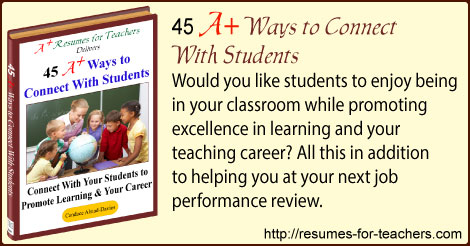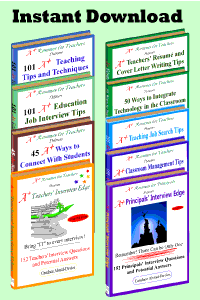A school administrator and teacher can build relationships with students in many ways. The strength of these relationships will be crucial to effective classroom management and student success.
Developing positive relationships with learners will help an educator discover new methods for educating diverse individuals, accommodating multiple intelligences, and maximizing the classroom’s learning potential.
Below are 5 examples of how to create effective teacher-student relationships to optimize student learning.
1. Get to know your students as individuals.
At the beginning of the school year, invest the time to learn each student’s goals, needs, and interests. By discovering what makes each of your students unique, you will find that it is easier to develop lesson plans and tailor-made assignments for your group.
Incorporating topics and activities of interest makes it much easier to capture students’ attention and actively engage them in the learning process. Furthermore, if you show a genuine interest in your students, they will pick up on it and know that you truly care about them and their education. Spending some one-on-one time getting to know the class as individuals allow educators to form a special connection with each one, making it easier to detect and help them overcome weaknesses.
2. Differentiate instruction to reach each student is paramount.
By incorporating auditory, visual, tactile, and kinesthetic methods, educators can facilitate all learners’ styles. This ensures every student can comprehend and retain the information in whichever manner suits them the best, thereby maximizing the learning potential and helping students stay on track.
If all students can relate to the material and understand it, they will remain interested in learning and eager to progress. By accommodating multiple intelligences simultaneously, the teacher can connect with the whole class on an academic level. The various methods mentioned above play an important role in fostering an interactive and intriguing learning environment. Students want to learn, succeed, overcome obstacles, and develop new talents and skills.
3. Share relevant personal stories or anecdotes that tie into students’ lives.
By demonstrating a connection between your own life and students, you will be able to effectively reach out to students and show that you, too, are human. Think of humorous personal experiences that will entertain students and convey a strong life lesson.
Tie as many stories as you can to lesson plans and core curriculum instead of being completely independent or random anecdotes. Sharing stories is a fabulous method to help students remember information. Make certain anything you share is age-appropriate, can’t be misconstrued, will not offend anyone, and will not put you in a bad light.
After sharing your own story, ask students if they have ever done or encountered something similar. By implementing this technique, you may even reach out to the quietest of students and get them to open up a bit more to yourself, as well as their classmates.
4. Offer students one-on-one support for areas they are struggling with or need to discuss.
Each student in your classroom, regardless of academic or developmental level, should receive individualized assistance at some point. The struggling students need it the most; gifted children need to be challenged, but the average learner also needs one-on-one guidance to reach their full potential.
Make time to offer individualized support before or after class or during lunch or recess to build student relationships and optimize student learning. Walking around the room while students are engaged in their schoolwork or group projects offers a good opportunity to help students. In addition to administering quizzes and exams, this is an effective way to discover students’ strengths and weaknesses and help them overcome obstacles. By making time for each student, not only will you be able to help them academically, you will be able to connect with them on a more personal level as well.
5. Maintain an open-door policy.
Let students know you are always there to help them with an academic or personal issue that may arise. Tell them your door is always open and you are willing to lend an ear. When children approach you about their various issues of concern, use active listening. Really listen to the individual’s problem, take the time to process it, and try to come up with a reasonable and effective solution.
Even students can tell when someone is not paying attention to them. The individual was probably nervous about approaching you in the first place; you need to demonstrate that you actually care and are willing to help. Offer help resolve peer conflicts if you notice that two or more students are not getting along, thus creating a harmonious and goal-driven learning environment.
Our 45 Ways to Connect with Students ebook will provide you with additional ideas to optimize student success.



